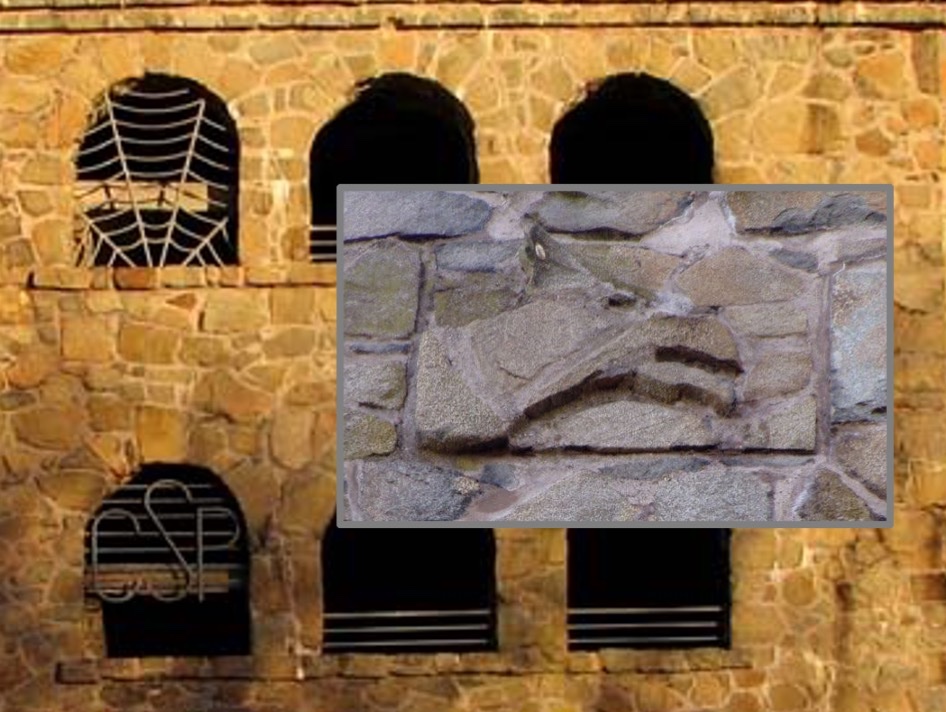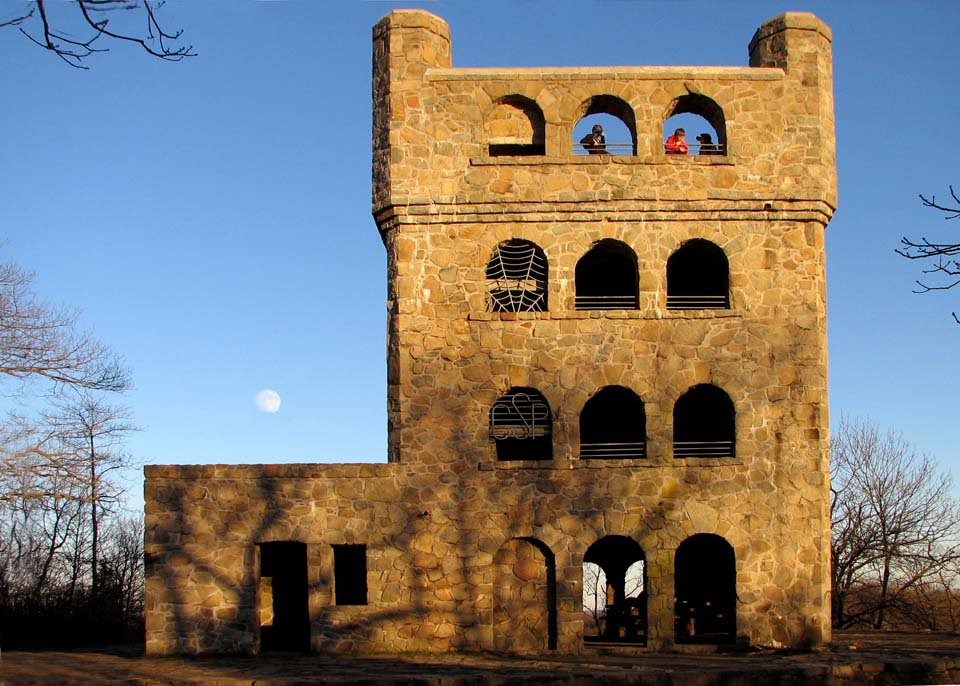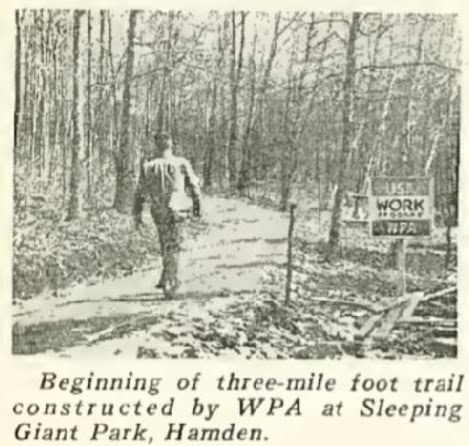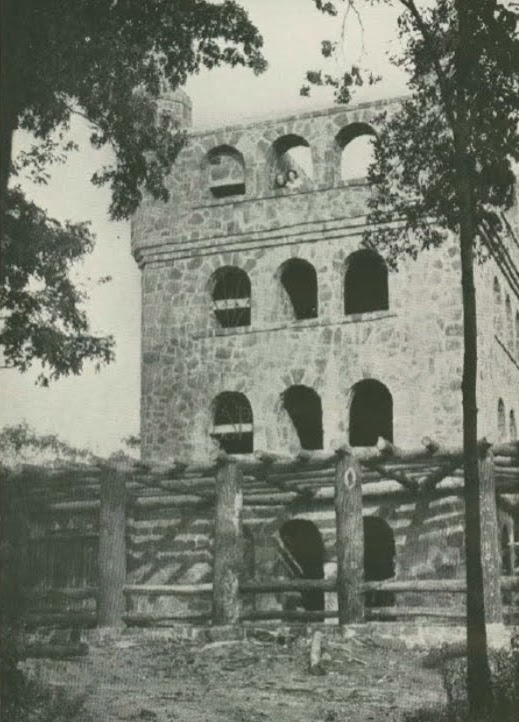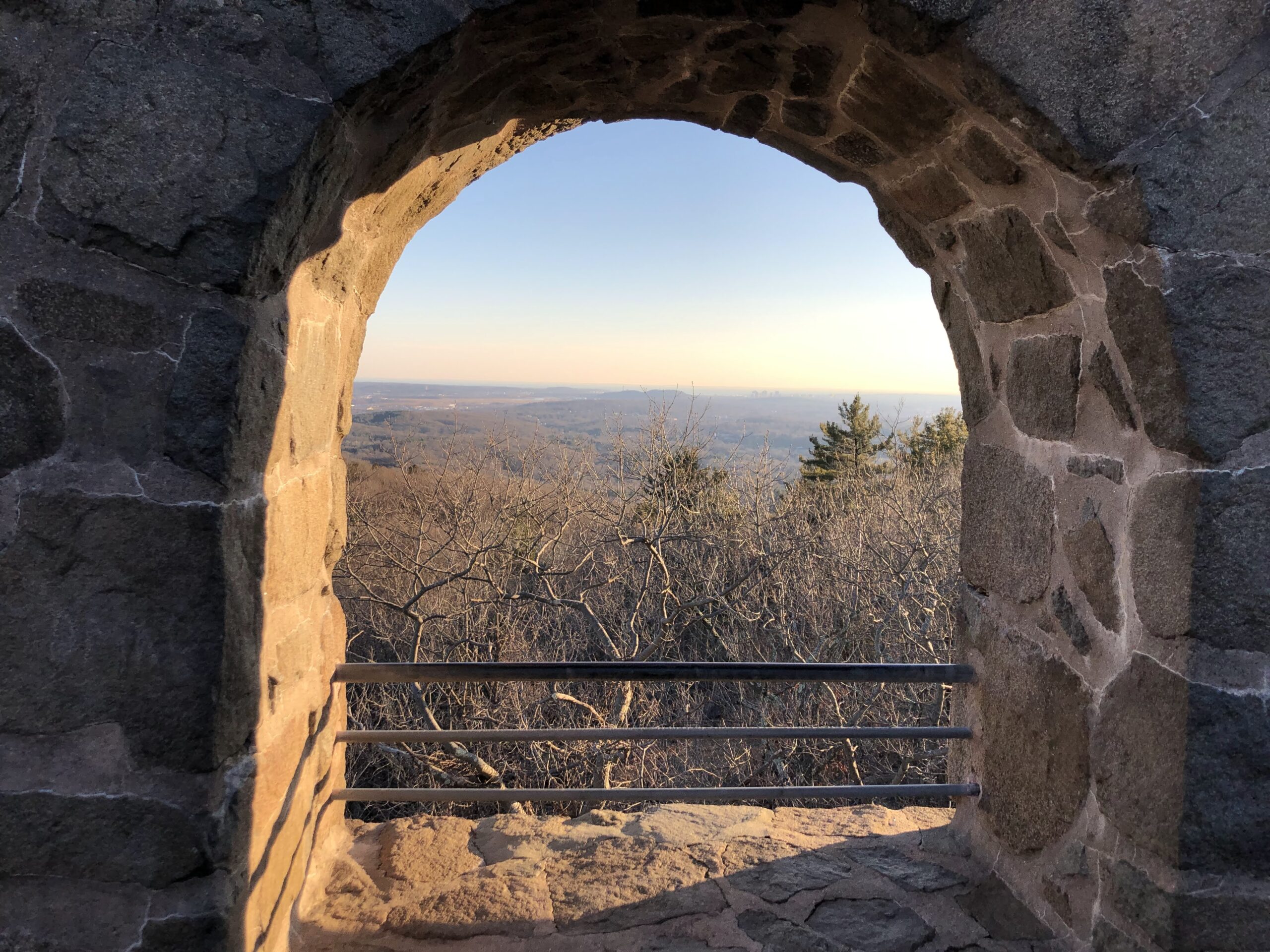The Tower & Its Path
Perhaps the most popular destination at Sleeping Giant State Park, the tower (and the path leading to it) sees more than one hundred thousand visitors every year. The tower path is a moderate 1.6-mile walk with a gentle slope, making it an excellent option for beginners. The tower itself provides 360-degree vistas from the highest point on the Giant. On a clear day, views extend over all of New Haven County and out to Long Island.
Like many features of the Giant, the tower is steeped in history. The tower also holds a few secrets that it is willing to share, if you look closely…
A Path to the Summit
The story of the tower begins with the story of the tower path. In the mid 1930s, Edgar Heermance, Secretary of the Connecticut Forest and Park Association, was designing plans for a gently sloping, 10% grade footpath to the highest point of the Giant. Bancel LaFarge, then serving as SGPA president, suggested that an observation tower be added at the top.
Construction on both began in the fall of 1935 through the Works Project Administration (WPA). 52 Civilian Conservation Corps (CCC) members were paid $35 every two weeks for their work on the project. The crew was overseen by foreman Harry Webb, and built the tower entirely with hand tools – there were no machines atop the Giant.
Webb was reported to have been a larger man, and needed to drive up the path to reach the job site. This gave the tower path another name – Fat Man’s Trail.
A Tower Standing Tall
The tower, a four-story structure constructed in the Romanesque style, was designed by Architect Russell T Barker. Recognizing that not everyone could navigate steep steps, Barker designed ramps into the tower’s plans, instead of traditional staircases. Restrooms were part of the tower’s first floor design, and a wooden pergola wrapped around the first floor.
A unique blend of materials went into the creation of this masterpiece. The tower’s stone was sourced from the remnants of the Wiser family stone house, the very first residence on the third ridge.
Completed on October 15,1939, the tower stands at an elevation of 739 feet above sea level, making it the highest point in the park. SGPA celebrated the tower’s opening by installing a plaque commemorating the pioneers who tirelessly advocated for the area’s designation as a state park.
During World War II, the tower took on an unexpected role as a lookout point. Equipped with a telephone for reporting sightings of potential “enemy planes,” the tower played a part in homeland security during those tumultuous years.
Tower’s historical significance was further solidified in 1986 when it was added to the National Register of Historic Places.
Renovations & Care
Over time, the tower has undergone renovations to ensure its preservation and accessibility. In 1996, a substantial $250,000 renovation project added weather protection and safety features. Walls were sandblasted, joints remortared, and new handrails were installed, enhancing both its structural integrity and visitor experience. In the same year, a 600-lb. picnic table was placed in the tower’s spacious first-floor room.
The tower was again repointed 2008 by the firm Landmark Architects, and continues to stand strong. At least one visitor sought shelter in the tower during the 2018 tornado event, which decimated other areas of the park but left the tower unscathed.
Secrets of the Tower…
The tower features hidden symbols that are easy to miss if you don’t know to look for them. Two are incorporated into the iron railings in the windows of the tower, and a third is part of the stonework itself.
Spider’s Web: Project foreman Harry Webb wanted to sign his name to the project, claiming “If Michelangelo can sign his work, so can I”. In a window on the west face, Harry placed iron bars, the kind used in making reinforced concrete, so that they formed half a “W” and half a corner of a spider’s web. That signature was later replaced with the wrought iron spider web that visitors can see today on the third floor window.
CSP: Just below the spider web window is another bit of metal work featuring the letters CSP. This stands for Connecticut State Parks.
Stone Dog: There are two theories behind the stone dog that is incorporated into the tower’s side. The first is that it is a reference to Russell T. Barker – the architect of the Tower. The other is that is a depiction of Harry Webb’s Doberman, “Lucky” (AKC registered Count Felix von Luchner) who ran freely and was not nice to some of the workers.
